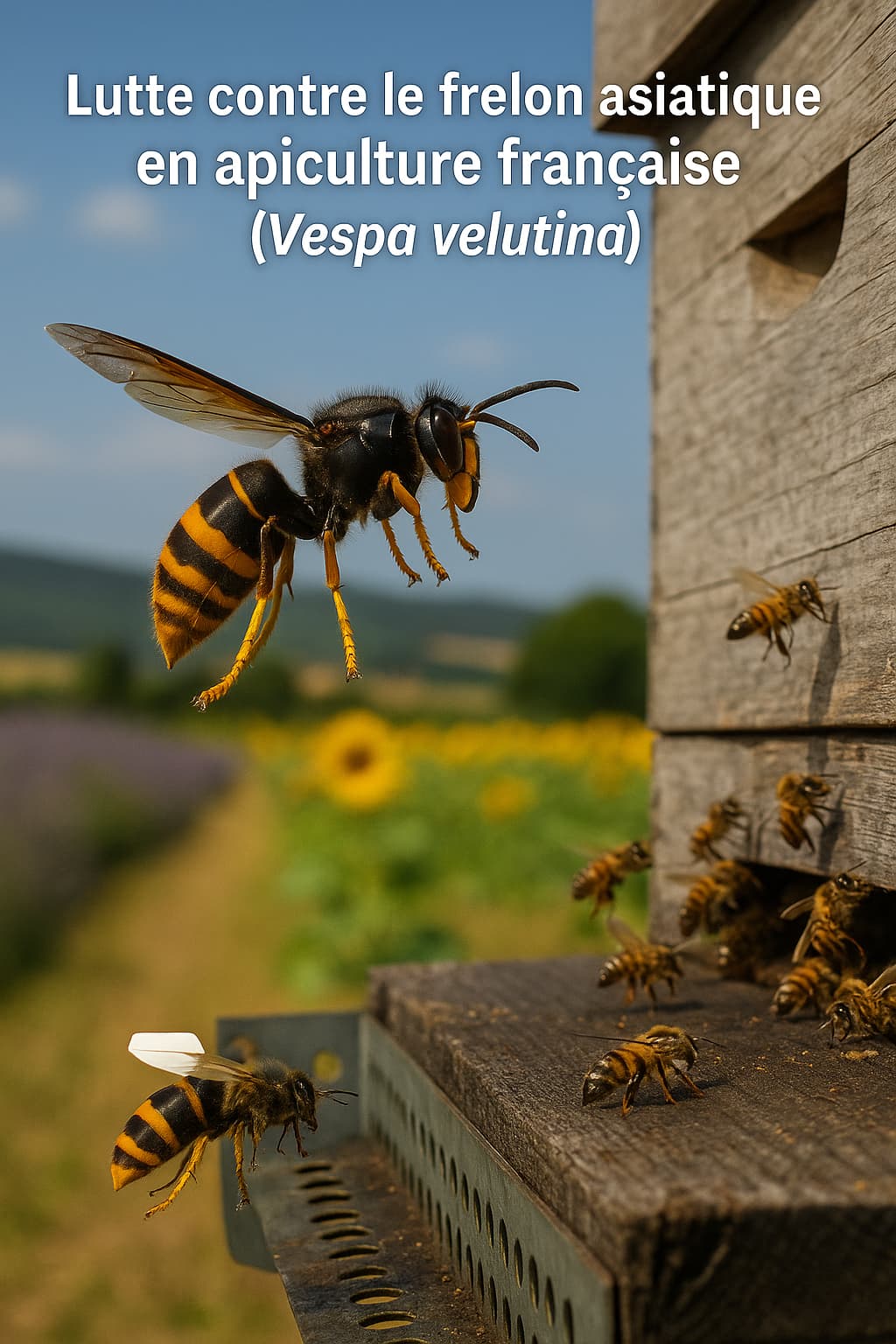The fight against the Asian hornet (Vespa velutina) in France
Fight against the Asian hornet (Vespa velutina) in France
Pourquoi Vespa velutina menace l'apiculture française?
The Asian frelons mainly contain the melliferous beauties. A colony that can eliminate milliers of beauties in that week. Reducing honey production, disrupting pollenization and affecting beetle colonies.
- Perte de colonies: up to 30% in the infested areas
- Honey production rate: 25 to 40%
- Disorganized behaviors of the beauties
When is Vespa velutina made in France?
The Asian Frelon was discovered in 2004 in Lot-et-Garonne, introduced accidentally after China. In 2023, it is present in 98 French departments.
| Year | Colonized zones |
|---|---|
| 2004 | Southwest |
| 2010 | West and South |
| 2015 | Centre et Pyrénées |
| 2020 | Belgian Border - Allemagne |
| 2023 | Almost all of France |
Comment Vespa velutina attach-t-the ruches ?
The plane before the entry of the ruffles, capture the butineuses en vol, the decapitated ones, and transport the remains to nourrir the larves.
Who prefers the new French language?
In 2024, France will adopt a loan against Asian frelons with €12 million for:
- Indemniser les apiculteurs
- Financer les dispositifs de piégeage
- Former destruction teams
| Measurements | Objective |
|---|---|
| Indemnisation directe | Compensation des pertes |
| Local financing | Trappes et détection |
| Coordination avec INRAE | Surveillance et prédiction |
Comment reconnaître le frelon asiatique ?
The measurement is 20 to 25 mm, with the thorax black, an anneau orange on the abdomen, and the yellow pattes at the extrémité.
| Criterion | Vespa velutina | Vespa crabro |
|---|---|---|
| Taille | 20–25 mm | 25–35 mm |
| Color | Noir avec anneau orangé | Roux/marron |
| Pattes | Extrémités jaunes | Uniforms |
Comment does the national piégeage plan work?
The traps are placed in print to capture the founding kings before the construction of the nests.
- Appâts: beer, sirop, fermented fruits
- Trappes à entonnoir with metal filet
- Suivi via des applications (ex. INPN Espèces)
Qui detruit les nests de frelons asiatiques?
The nests are eliminated by the attended teams, often at dawn or at twilight, with insecticides, food or aspiration at night.
Does any natural method exist?
Actually, there is no effective predator in Europe. The tracks are explored: entomopathogènes champignons, insectivorous oiseaux, génétique biocontrol.
What is the role of beekeepers?
The beekeepers play a role: installation of traps, signaling of nests, active surveillance of their ruchers.
Are those regions the most touched?
| Region | Taux d'infestation estimé |
|---|---|
| New Aquitaine | 90 % des ruches impactées |
| Occitanie | 85% |
| Brittany | 80% |
| Auvergne-Rhône-Alpes | 70% |
| Île-de-France | 60%, with strong progression |
Below: preventative strategies, technological innovations and practical guides for beekeepers
[End of Article]
- apiculteur France
- apiculture française
- biodiversité
- calabrone asiatique
- destruction de nids
- espèce invasive
- expansion Vespa velutina
- frelon asiatique
- indemnisation apiculteurs
- INRAE frelon asiatique
- loi frelon asiatique
- lutte frelon asiatique
- menace pour les abeilles
- nid de frelon asiatique
- piégeage sélectif
- plan national de lutte
- ruche attaquée frelon
- surveillance des nids
- trappes à frelons
- Vespa velutina






























